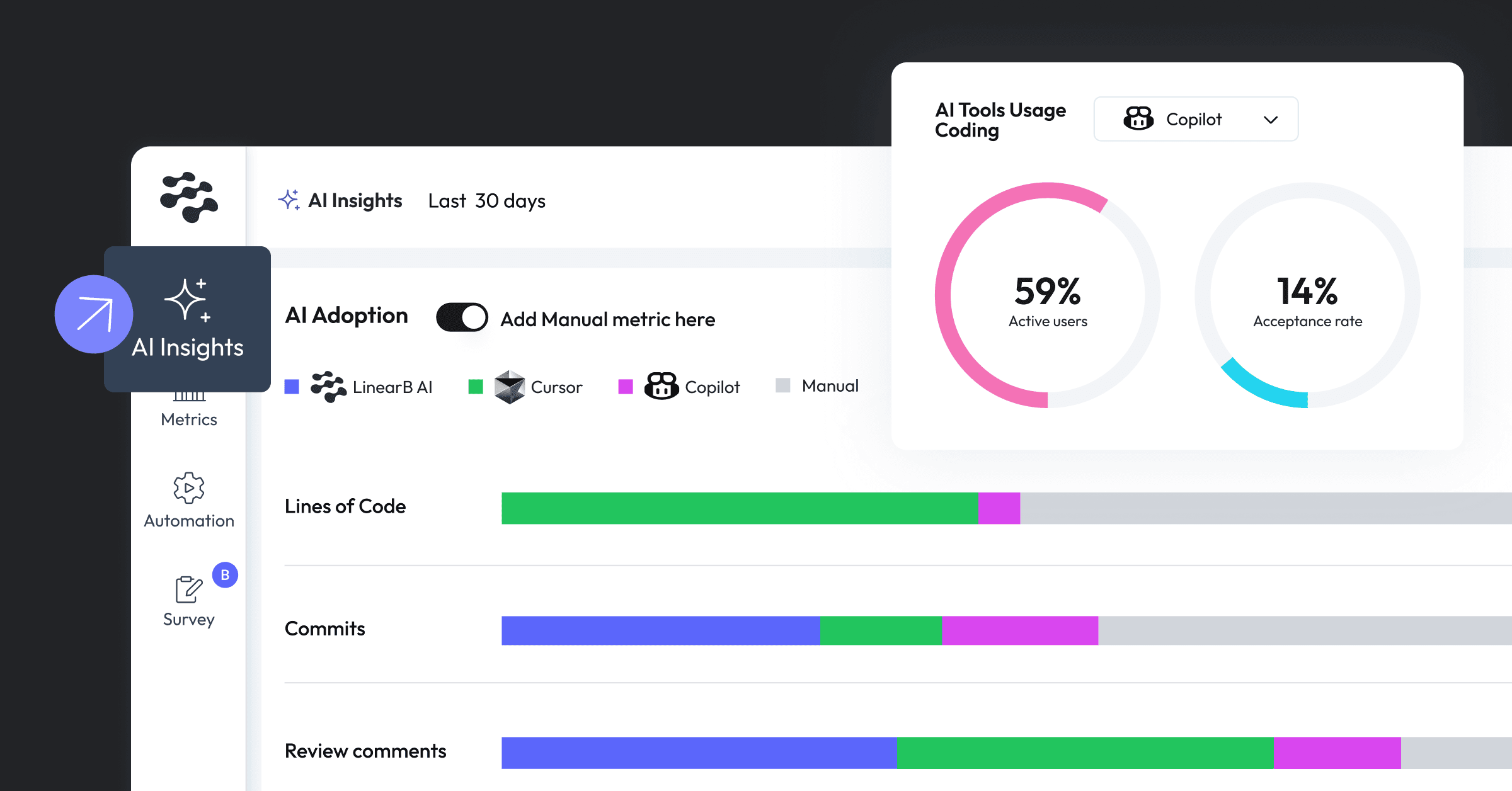Engineering Leader's Guide to Programmable Workflows
Metrics alone don’t improve engineering teams. In this comprehensive guide, you’ll find:
A breakdown of Continuous Merge philosophy and its many benefits
Tactical guidance on how to implement workflow automation on your repos
7 of our favorite workflow automations that boost efficiency and enhance stability
Engineering Leader's Guide to Programmable Workflows
Download your free copy

Metrics Alone ≠ Operational Excellence or Business Outcomes
Metrics and visibility are crucial, but they don’t mean much if you don’t have a way to act on the insight they provide.
The reality is that metrics are just numbers. Without action, the only change they’ll drive is another meeting getting put on your already busy schedule to discuss them–and who wants that?

Instead Use Programmable Workflows to Automate Improvement
When engineering leaders apply automation against insights from metrics like DORA, performance benchmarks, and business alignment data, they are able to build a culture of continuous improvement. It’s through this targeted use of automation that benefits like increased efficiency, higher code quality, policy standardization, and a better DevEx are realized.

“But I already have CI/CD to automate dev workflows.”
CI/CD is very powerful and provides some pretty incredible results including more quality/predictability at higher speed/scale and reduced risk. But when workflow automation is shifted further left (pre-merge) and applied to the PR process, the efficiency and quality gains compound. This is what’s known as Continuous Merge and it completes the promise of CI/CD.

Apply Automation Where Devs Spend Their Time
To reap the maximum benefits of automation, it needs to be applied strategically and meet developers where they spend their time: in collaboration/communication tools and in git repos. Some examples of these environment-specific automations include real-time alerting and PR labeling respectively. With this highly targeted approach to automation, you’ll see tangible benefits like:
Getting PRs to the right people immediately
An average 44% reduction in cycle time
Reduction in developer toil that yields higher merge and deployment frequency (and higher dev yields satisfaction)

Use Automation for Merge Standard Enforcement At Scale
This is likely not new information: Development teams operate in many different ways. While they all probably have coding standards, it’s likely that very few have merge standards–policies and goals set and enforced at scale using policy-as-code. Programmable workflows make it easy for teams to apply and adhere to merge standards, resulting in:
More time spent writing and shipping code
Less time spent in PM tools and on status updates
Reduced toil, confusion, and ambiguity with code merges

Download Your Free Copy

More resources

Report
2026 Software Engineering Benchmarks Report
Created from a study of 8.1+ M PRs from 4,800 engineering teams across 42 countries.

Workshop
2026 Benchmarks Insights
Explore new AI insights from the 2026 Software Engineering Benchmarks Report – backed by 8.1M+ PRs across 4,800 engineering teams and 42 countries.

Demo
Understand AI adoption and developer impact with the AI Insights Dashboard
This demo guides you through the AI Insights Dashboard, demonstrating how to track and analyze trends in AI tool adoption, rule coverage, and code quality....